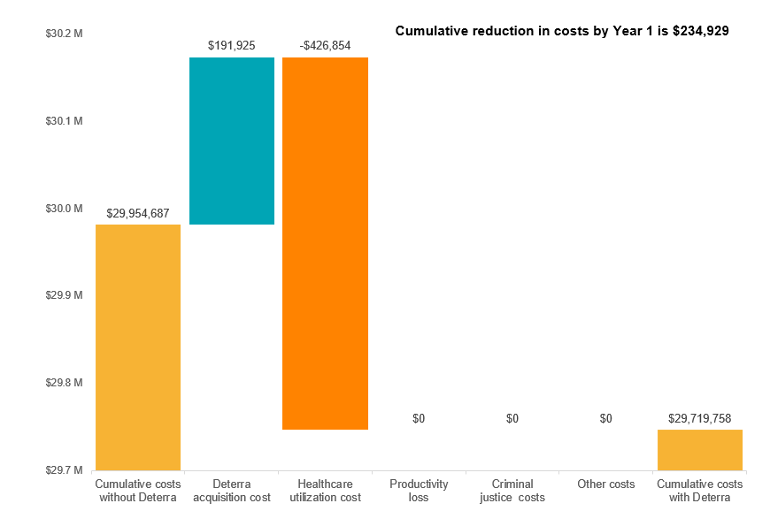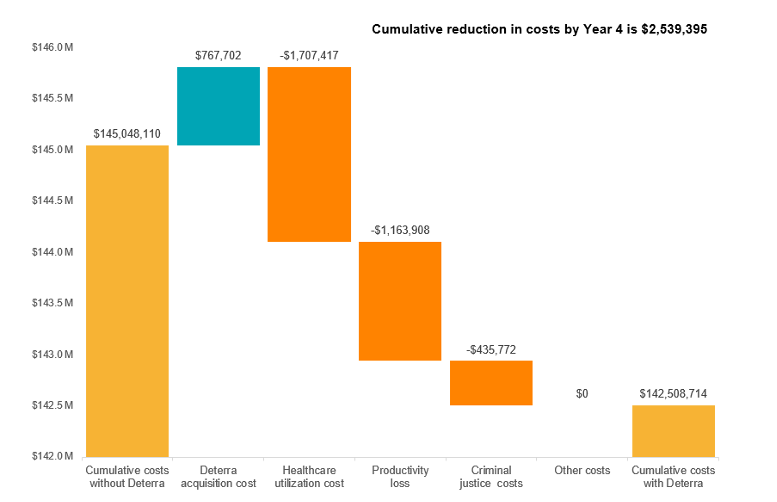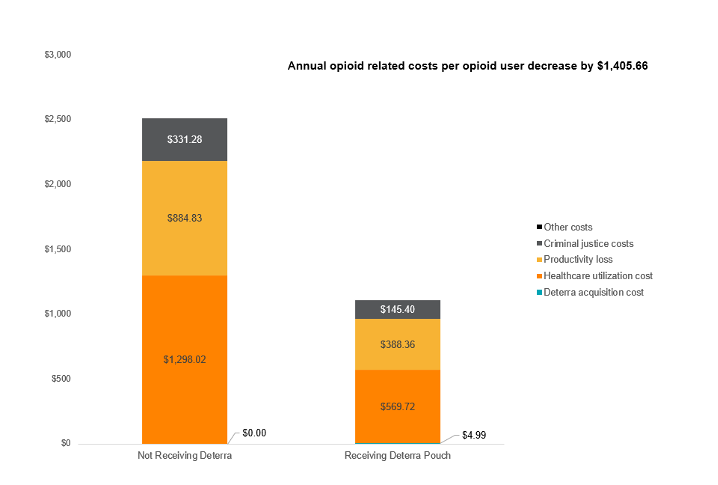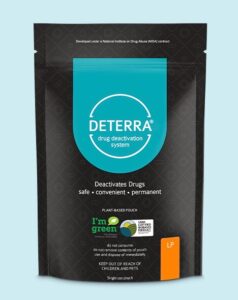How to Reduce the Cost of the Opioid Crisis with At-home Drug Disposal
The national opioid crisis cost the United States a record of nearly $1.5 trillion in 2020, according to a new report from the U.S. Congress Joint Economic Committee (JEC). This reflects a 37% increase from 2017, when the CDC last measured the cost. These totals account for the cost to society of lost lives and reductions in productivity as well as increases in healthcare and criminal justice costs associated with the opioid crisis.
Opioid use continues to be widespread: millions of pills are prescribed every year to treat pain related to chronic conditions like arthritis and low back issues and for acute pain from surgeries, injuries and accidents. However, survey data shows many individuals prescribed opioids are not fully educated on the risks associated with them, including the potential for misuse, abuse, addiction and diversion. In fact, more than 60% of people with leftover prescription opioids keep the pills for future use rather than disposing of them, with one in five reporting they share their medication with another person.
Providing basic education and resources for individuals prescribed opioids is a simple yet critical step in lowering the staggering societal costs of the opioid crisis. Independent research suggests that low-cost interventions like providing in-home disposal methods to individuals prescribed opioids increases the likelihood of proper disposal and can reduce the amount of excess medication available for misuse.
The Cost Savings of Proper Medication Disposal
Incorporating an at-home drug disposal solution into a health plan, wellness program or community-based prevention program is a simple, effective way to generate significant healthcare savings and reduce the individual and societal costs associated with opioid misuse.
For example, consider a sample population of 100,000 people with an average household size of 2.6 (38,462 households). A Health Economics Outcomes Model, using data from 12 published scientific studies, shows that distribution of Deterra Pouches could reduce estimated healthcare utilization costs by more than $400,000 over a 12-month period.

Over a four-year period, healthcare utilization costs would be expected to decrease by $1.7 million and the cost per member per month (PMPM) reduced from $11.89 prior to the start of the program to $11.64 by its fourth year, a cumulative savings of $0.24 PMPM.
Beyond healthcare savings, there are substantial indirect costs that could be greatly reduced through Deterra distribution. For our example 100,000-member population, if we factor in productivity loss and criminal justice costs associated with opioid use disorder (OUD), first-year savings jump to $634,849; after four years, the cumulative cost reduction totals more than $2.5 million.

In this scenario, the annual societal costs per opioid user/household with leftover opioids would be reduced by $1,405.66.
Over the four years of this distribution model, we would expect to see 25 fewer cases of OUD and two lives saved as a result of proper disposal of excess medication.

Prevention is the Cure
Preventing opioid misuse, abuse and diversion is essential to curbing the substance abuse crisis, and prevention begins with proper disposal of unused medications. The Deterra System is a simple, cost-effective tool that can be integrated into health plans and community prevention programs to encourage proper drug disposal in every household.
What is the Opioid Crisis Costing You?
If you are interested in having a model run to see how integrating Deterra into your health plan, wellness program or community prevention effort could reduce costs and save lives, contact us for a customized assessment.
The examples detailed in this article were generated using a health economics outcomes research model created by Partnership for Health Analytics Research, LLC to determine the financial implications of using Deterra System. It was developed using data from 12 published studies to model scenarios based on the number of households with unused opioids, the likelihood of proper disposal behavior, the prevalence of opioid use disorder (OUD) stemming from misuse of opioids in the home and the costs associated with OUD.

